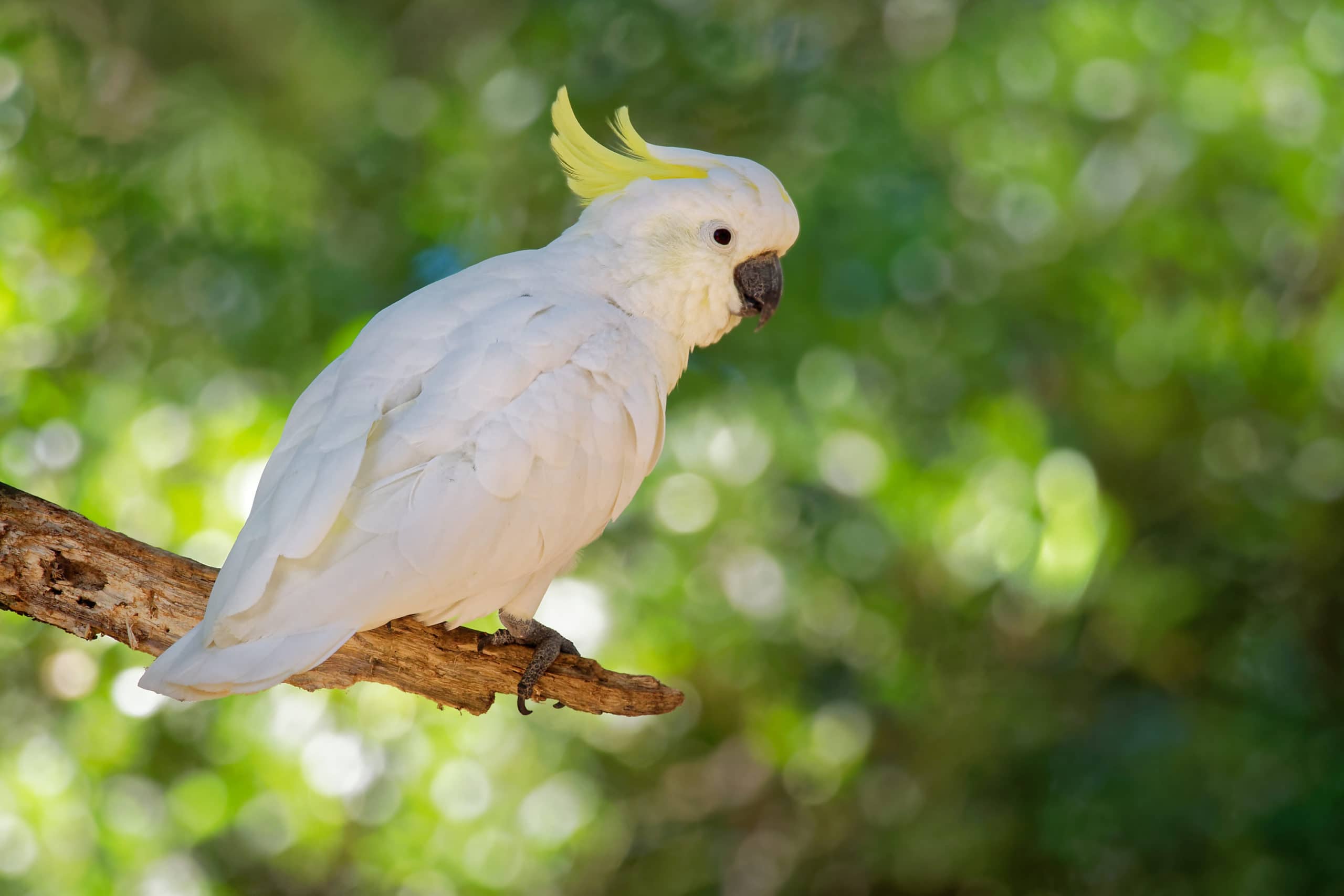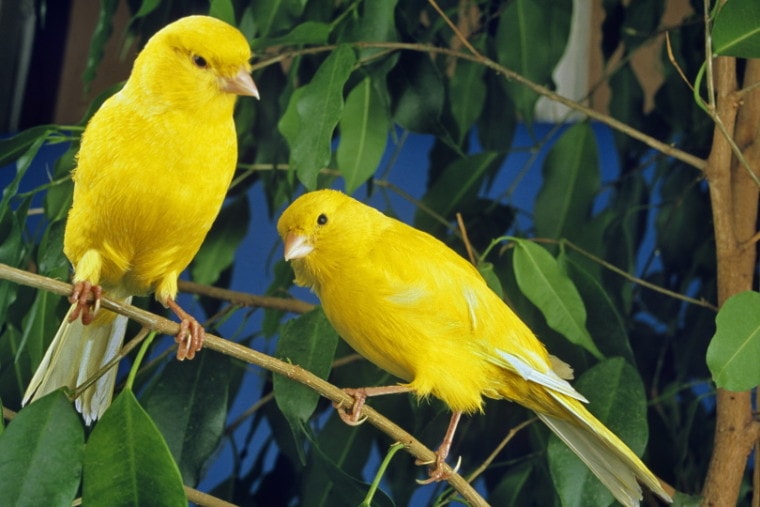
Canaries are small, attractive birds that have lived in American stories and psyche for generations. Although most people think of mines and their deadly fumes when discussing canaries, these birds make great home companions and are frequently found in nursing centers.
If you want to own an easy-to-care-for bird as a pet, the canary is a great place to start. This care guide tells you everything you need to know about Canary ownership to decide if this delicate bird is right for you. Keep reading to learn more.
Species Overview
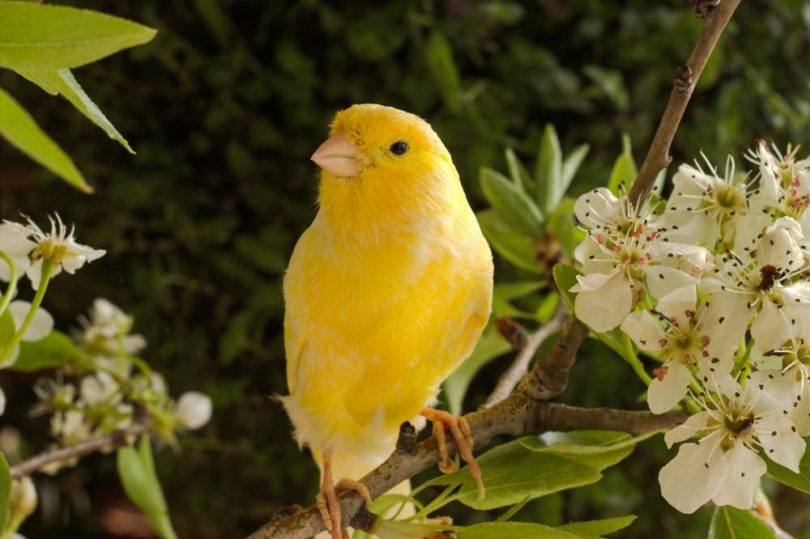
| Common Names | Canary |
| Scientific Name | Serinus canaria |
| Adult Size | 3.9 to 4.7 inches in length; weight of 8.4 to 24.3 grams |
| Life Expectancy | At least 10 years, often 15 years or more, with proper care |
Origin and History
The canary is native to the Canary Islands, after which the bird is named. The original canary was a type of green finch with a unique song. Europeans began breeding and importing them in the 1500s because of the canary’s unique song.
From the breeding process, over 200 canary types are available today. Like dogs, Europeans bred canaries for many purposes and preferences, though most were bred for their song. Now, canaries resemble one another today, but they are very different from the original finch found on the Canary Islands.
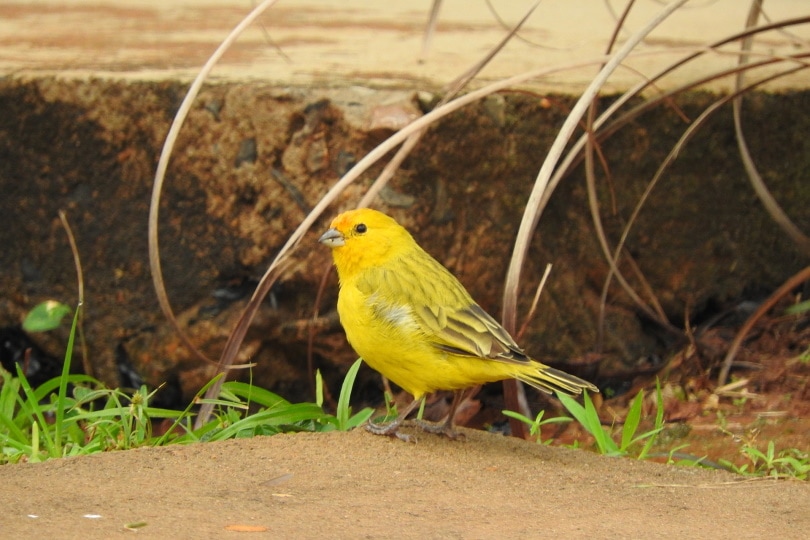
Temperament
Canaries are sometimes called the “forgotten bird” because they differ from other common bird pets; parrots and other talkative birds are great as hands-on pets, but the canaries aren’t. Instead, they prefer to be left alone to sing in their cages.
Hand-raised canaries can be friendly and easily handled, but finding birds raised exclusively by hand isn’t easy. So, expect to leave your canary alone.
Although it may be a bit disappointing that you cannot handle your canary, these birds are very easy to raise and get used to. When left alone, canaries have great temperaments and beautiful songs that fill your home with life.
Speech & Vocalizations
Canaries are prized because of their beautiful sounds. Although these birds are known for their song, finding one that sings well can be difficult. Often, the best canary singers are males at least six months old. Females can sing as well, but they don’t sing as often or as beautifully.
The various canary breeds can produce different songs, which is why there are so many types of canaries available. Certain song canaries were bred specifically for a song, such as the American singer, the Spanish timbrado, and the German roller.
If you want a canary with vocal skills, it’s best to hear it sing before purchase. Some canaries bred for certain singing purposes still cannot sing as well as expected.

Canary Colors and Markings
In the wild, canaries are typically greenish-yellow. Because of breeding, domestic canaries can come in many colors, including yellow, orange, white, and red, though yellow is the most common.
You can feed canaries any type of food you want without affecting its colors or markings. Certain foods are known to enhance the canary’s natural color, though.
Caring for the Canary
One of the benefits of owning a canary is that they’re very hardy birds. Canaries prefer temperatures around 75 degrees F but can easily acclimate to colder temperatures. These birds can be acclimated for outdoor aviaries even in cold locations.
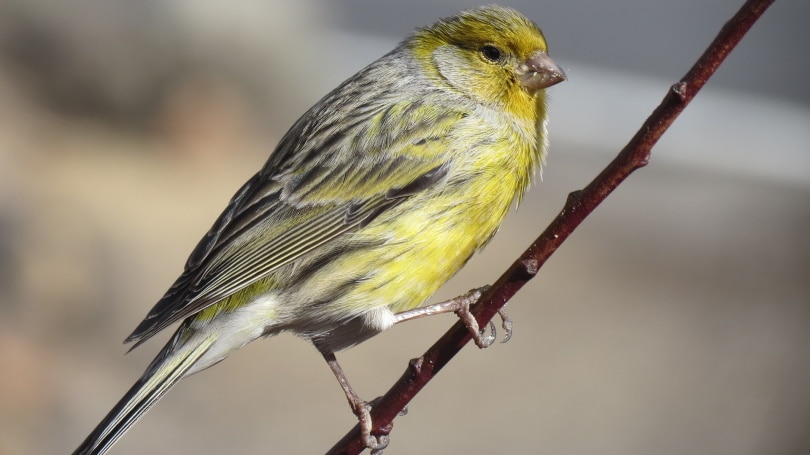
Weather and Environment
It is important to acclimate the canary properly. The birds are incredibly sensitive to fumes and swift temperature changes without proper acclimation. That is why the canaries were used in many coal mines of the past.
You won’t have to worry about extreme temperature changes or fumes in most homes. The bird will be perfectly content at room temperature.
Feeding
Feeding your canary is very easy. Most canaries enjoy lots of fruit, veggies, canary seed mix, egg food, and high protein sources. You can easily find premium canary food for easy feeding at a local pet store.
Cage
Get an appropriately sized cage for your canary. Although canaries are small, get as big of a cage as possible because the bird will appreciate the larger size. Make sure that the cage is suitable for canaries and their small size to ensure they don’t get their heads caught in the bars.
Clean out your canary’s cage once a week. Like any other bird, canaries can become infested or get infections due to poorly maintained habitats.
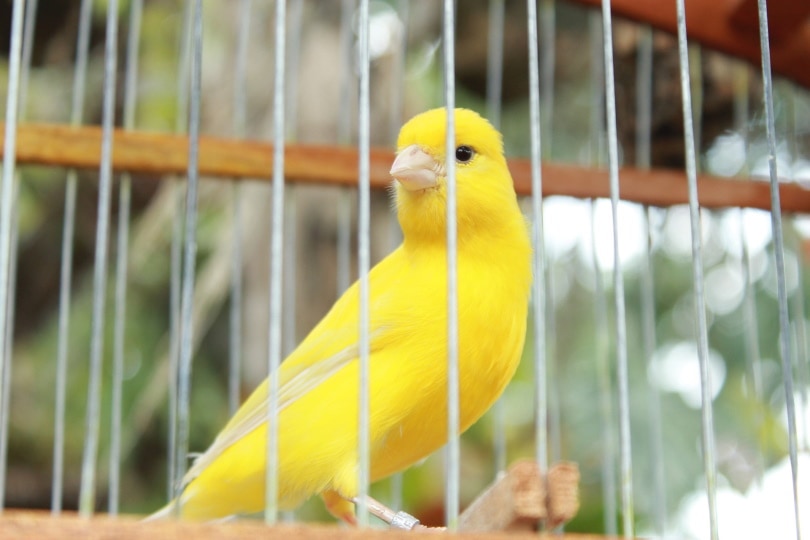
Common Health Problems
Compared to many other birds, canaries are hardy and have fewer health problems. However, canaries can become victims of mite infestation. If you catch a mite infection early on, your canary can be saved, but serious infestations can lead to death.
One common health problem for outdoor canaries, specifically, is canary pox. Mosquitoes transmit this virus. If a canary were to get canary pox, it is likely to die. Because of this severe health condition, it is recommended to keep canaries inside where they are less likely to be bitten by mosquitoes.
Of course, canaries can become ill or depressed without the proper habitat or diet. These conditions can be avoided simply by caring for your canary properly.
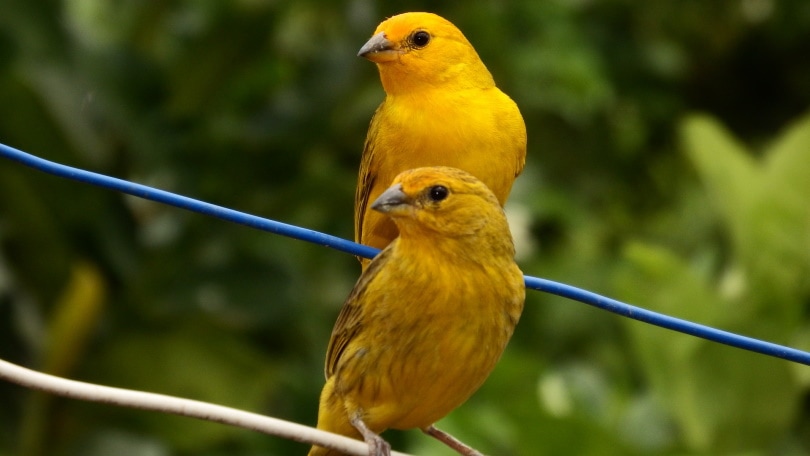
Diet and Nutrition
Canaries have a basic diet that you should be able to accommodate with ease. It’s better to get a canary-formulated mix to ensure your canary gets all the vitamins and nutrients it needs.
In addition to the bird mix, provide greens and fruits daily. Most canaries like just about any green or fruit they can get their beaks on. So, they make great treats that are also healthy and enjoyable for the bird.
Exercise
Canaries don’t particularly need a lot of exercise. If you provide your canary the proper sized cage it needs, it should get most of its exercise by flying around inside the cage.
We recommend getting a large cage for this reason. The larger the cage is, the happier your canary will be since it can easily stretch.
If your canary is comfortable around you, you may even be able to let it out in the home. Exercise caution when letting the canary out of the cage to prevent getting lost or injured in the open.
Where to Adopt or Buy a Canary
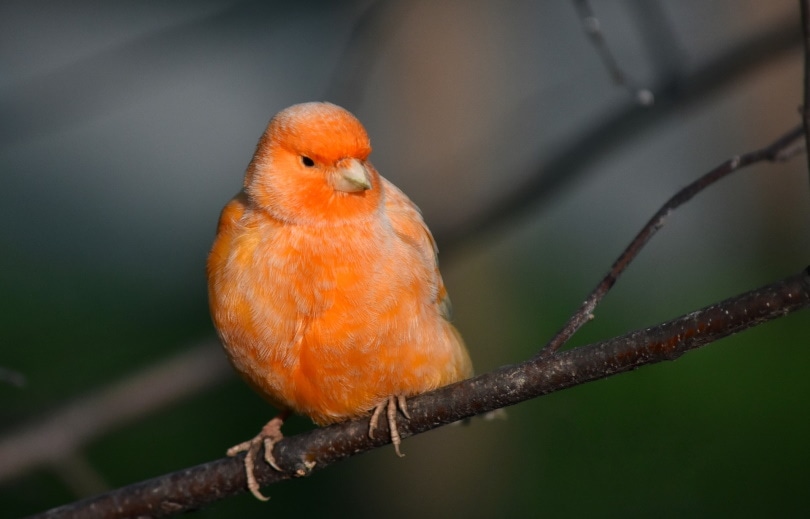
Because canaries are so small, easy to care for, and popular, you should be able to find canaries at pet stores near you. If you are looking for a rare breed, you will likely have to seek out a specialized breeder.
We recommend considering adoption societies and rescue organizations as well. Although canaries don’t frequent these locations, you still may be able to find one for adoption. The price for your canary can range between $25 to $200, depending on its breed.
Conclusion
A canary is a perfect option if you are looking for a beautiful songbird to add life to your home. This bird is gentle, small, long-lasting, and stunning.
Make sure to provide your canary with the proper cage and diet it needs to live a happy and healthy life. If you cannot provide the canary what it needs, opt for a different pet instead, most likely not a bird.
Next on your reading list:
Featured Image Credit: slowmotiongli, Shutterstock





